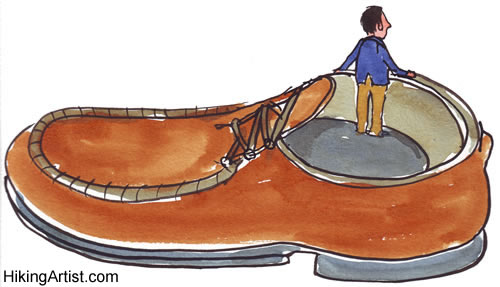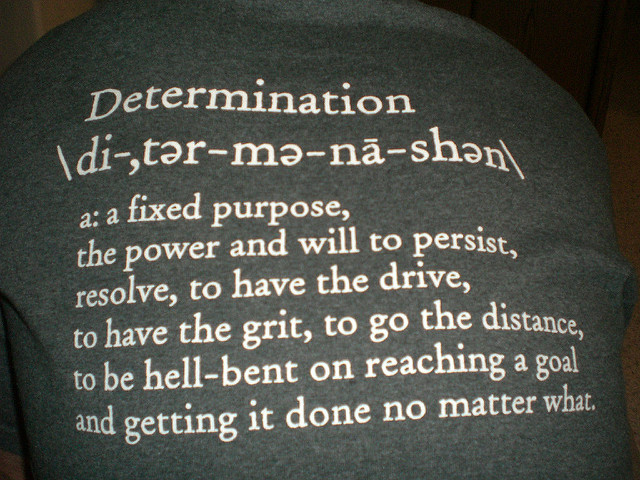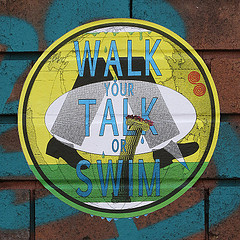|
|
|
Friday, September 7th, 2018

A Friday series exploring Startups and the people who make them go. Read all If the Shoe Fits posts here.
I love sandwiches.
My wife says I grew up in a “sandwich culture.” She grew up in the American South where people sat down to eat full meals a lot. We did that too in New York City, where I grew up, but sandwiches were a key part of life.
I’d stop by the deli on my way to my job after the school day was done and pick up the sandwich that would be my “dinner” that night. I rotated through roast beef and corned beef and pastrami. Cheese. Rye bread. I’d use some of my earnings to buy sandwich fixings for the weekend when I didn’t work. The best sandwiches were the ones you ate leaning over the sink.
Sometime in the last twenty years, sandwiches changed. The bread got flimsy and there was a lot less meat. People wanted to eat healthy so they cut back on the bread and the meat, but kept the cheese. Then came “low calorie” cheese.
Ugh. Low calorie cheese tastes like drywall. I kept my rye bread and I wanted a slab of cheddar or swiss on my roast beef, but I was the exception.
The sandwich in the age of the obesity epidemic
The challenge was pretty straightforward. As cheese became a more and more important part of the sandwich, people wanted it to taste good. Cheese makers responded by making low calorie cheese in various formulations. It tasted like drywall. They tried other formulas. It still tasted like drywall. Then the people at Sargento rethought the challenge.
Sargento: a history of innovation
Sargento is a big player in the packaged cheese business. They’re also a family owned company that’s been around since the 1950s with a history of innovation. In 1969, they introduced the pegbar system that’s now standard in supermarkets. They were the first to use re-sealable packages for cheese and the first to package shredded cheese.
Changing the challenge
The company figured that whatever they came up with would have to meet two criteria. It would have to use real cheese, not low-calorie, horrid tasting “cheese.” In other words, it would have to taste the way customers wanted cheese to taste. And, each slice would have to have no more than 45 calories.
Somebody at Sargento must have thought: “We can’t make low calorie cheese that tastes good. And we can’t offer smaller slices. What if we could reduce the calories in a slice of cheese by slicing real cheese thinner?”
The new challenge
That’s a great idea, but existing equipment couldn’t do it. Sargento could slice the cheese thinner, but then the slices would stick together. Whatever they came up with would have to work with existing packaging. Meeting that challenge took a $20 million investment in new technology. Sargento made it work.
The big payoff
Ultra-Thin Slices were released in 2012 and did $60 million in sales the first year. The second year sales more than doubled to $157 million. Even better, Ultra-Thin Slices attracted a lot of people who weren’t eating packaged cheese before. In other words, much of the sales growth was from new customers. That’s a breakthrough innovation by any standard.
What you can learn from Sargento’s Ultra-Thin Slices: rethinking the challenge
The breakthrough innovation didn’t happen until someone reconceived the challenge. Before, everyone, including Sargento, had conceived the challenge as coming up with a lower calorie cheese. When Sargento changed that to “slice cheese thinner so it’s only 45 calories” solutions became obvious.
What you can learn from Sargento’s Ultra-Thin Slices: the courage of conviction
It looks obvious now, but it took real courage to commit $20 million to develop new technology to support the reconception of the challenge. It may not have been a “bet the company” moment, but it was close.
Bottom Lines
Great innovation will not happen until you think of the challenge differently.
Making a great innovation a reality will not happen without courage.
Originally published at Three Star Leadership in 2016.
Image credit: HikingArtist
Posted in Entrepreneurs, If the Shoe Fits, Innovation | No Comments »
Thursday, June 7th, 2018

I wrote a piece last week on the idea of embracing the rush of our lives and how it’s a human condition. While to some degree I do think it’s a sign of our times and not altogether negative, I do see the impact it has made.
In school I read about the effects of coffee on the industrial revolution. The idea was that the widespread use of the stimulant allowed shift workers to operate all hours of the day and night.
Of course, we, in the modern day, have benefited on the backs of their labor; however, we have also learned from the negative aspects of that society. At least in this country, we no longer employ children, we have tougher safety laws, and regulation.
Back to my point of embracing rushing, I was wrong to take it on from a single standpoint. Through this past week I have searched out resources to learn more about the effects of our gadget driven world and what it has gotten us.
I titled this post “Start with why” and it’s a rip off from a great book of the same name by Simon Sinek.
That book focuses on sales and challenges sales people to start by asking why someone would want to buy their product/service and then shape a solution around that.
However, he also speaks about the current state of our society and it’s character.
If we could sum up the modern First World in one word it would be addiction and not just to drugs.
Many in my generation are addicted to our phones, our streaming services and our reliance on same day delivery. We can order anything, watch any show and contact any person in the world. In an odd twist of fate I can get live tweets from our current president and tweet him back.
As a current digital addict I tend to look at others and see it as normal.
When I am at the park I tend to not use my phone and see that others are. As a result I figure I must be balanced.
However, first thing in the morning I check my phone and look at my notifications. If you were to follow me on a social network you would see that I don’t post a ton. In reality I tend to not think I have much to say that is important for the world to know and I limit my posts for food recommendations while in new cities.
However, I check all the networks multiple times a day. I get updated on the latest coffee from the person I had 10th grade English with and also get to see the latest from our President.
It’s an odd time to be alive.
Why do we do this?
One reason is dopamine. It is the same drug that opiates release and it’s triggered naturally when we see activities or people responding to our posts. That’s why we look to see the comments, the likes and the re-shares.
It’s also why we tend to get worse over time with our usage. We need more and more dopamine to feel good.
I wrote all of this to say one thing.
Maybe we shouldn’t always embrace the rushing and start with the why.
Why are we doing this; who do we care about; why are we not happy.
Image credit: Ksayer1
Posted in Personal Growth, Ryan's Journal | 1 Comment »
Thursday, April 26th, 2018

I mentioned last week that I was in Vegas for a sales kickoff. The event was strong and left me feeling both pumped and ready to move towards my goals for the year.
It also left me wanting. There are certain categories within the sales ecosystem and each category has an award winner for the year. In my category I was not the winner this year and it left me wanting to step up to the challenge.
Something I truly believe is “competition breeds success.” It could be sports or academics or work. When you have someone to compete with it can take you out of your comfort zone and pushes you to be your best.
In my current role I work pretty much alone. I am on a team but we are all remote and I don’t receive a ton of feedback from my management. As a result I sometimes feel lost or drifting.
However, last week changed that. I realized there is an end goal in mind and I do have a way to achieve it.
Today I took some steps towards that. I have a whiteboard in my office and I wrote my goal for the year along with what steps I can take to get there. It’s the first and last thing I see everyday. In addition, anyone else that comes by can see it too. It creates accountability and responsibility.
I am also making sure the items I work on are getting me to my goal. Am I using my time wisely? Am I working on high value tasks? These will all add up over time.
Finally I am making it a point to document my wins and losses so I can improve.
How do you work at it when you’re going towards a goal?
Image credit: Dana Lookadoo
Posted in Personal Growth, Ryan's Journal | No Comments »
Thursday, February 22nd, 2018

Lately I have become very involved with the look of my pool. I live in Florida and we are almost to swim time, my apologies to my northern friends. I’m not obsessed in a vain way, more in that the activity of scooping out leaves calms me in some way.
I find that the gentle swirl of the water and satisfying thunk of leaves pulled from the pool can relax me immensely.
During the activity there are always one or two leaves that have escaped my net and I think, just a bit more and I will have them all.
While this may be a simple analogy I have found it can be applied throughout my daily activities.
I’m in sales and the results of my actions are very apparent on the big sales board. I manage a practice within my company that is unique and still being nurtured.
One aspect of that is I receive very little feedback on how I am doing on a given day. It can take months or years before I truly see the impact. That can be a bit debilitating if you need a constant ego stroke. My solution for this is to look at short term successes and activities. I try to do a bit more each day.
As we go through the week, I would imagine you’re facing challenges that may require a bit more. Sometimes I’m overwhelmed with the big stuff, so I break it down. Build upon and expand. How do you approach those activities?
Perhaps it’s a single minded focus, micro doses of acid, or just the elephant approach of taking one bite at a time.
This week make it a point to do just a bit more.
I can assure you that you’ll be happy with the results.
Image credit: KimManleyOrt
Posted in Motivation, Personal Growth, Ryan's Journal | No Comments »
Thursday, April 21st, 2016
Today you get a lesson from Nature on never giving up.
Keep trying and you will flourish

No matter how hard…

You can push through

And the result will be beautiful

That said, don’t be so impressed with your power to overcome obstacles that you prove Immanuel Kant’s observation that possession of power inevitably spoils the free use of reason to be true.
Internet images from Anonymous
Posted in Entrepreneurs, Personal Growth | No Comments »
Monday, April 27th, 2015

Having trouble getting people to do things differently or do something new?
According to Henry Thoreau, “Things don’t change, people do.”
Over the years, I’ve watched managers and companies try to change the outcome without changing the input.
They’ve talked/explained/begged/pleaded/threatened, but nothing changes.
They are suffering from Einstein’s version of insanity.
Doing the same thing over and over again and expecting different results.
If change is the goal, it’s best to start with yourself.
“To change what they do, change how you think.”
You need to change because the way you think, what you think, how you think, and what you believe — in other words your MAP — dictates the authenticity of what you do and the responses you get.
No matter what great ideas you read, hear or talk, no matter what great leader you try and channel, you will always walk your own MAP.
Image credit: Newtown graffiti
Posted in Change, Personal Growth | No Comments »
Tuesday, April 1st, 2014

Sometimes motivation requires more than the opportunity to grow, making a difference, challenges and feedback.
Along with knowing what makes your people go, you need to understand what blocks them.
At first glance, one seems more prevalent in women programmers, but I’ve seen versions of it in both men and women and not just in programmers—nor is it particularly new.
One is something known as the “imposter syndrome.” That’s when you’re pretty sure that all the other coders you work with are smarter, more talented and more skilled than you are.
The second is pure myth; again not only in the programming world.
The Real Programmer lives only to code. That programmers are expected to work insanely long hours isn’t new. But this idea that they are doing it of their own accord, for the sheer joy of it, is new.
Either attitude will kill productivity and cripple not just those who suffer from them, but those with whom they work, too.
Good bosses, no matter their level, are aware of these and other mental blocks and become adept at providing whatever support and/or guidance is needed to move beyond them.
However, bosses who harbor the attitude that ‘it’s not my problem’ or believe their people should ‘just get over it’ usually become proficient at hiring—primarily because they get so much practice.
Flickr image credit: Joe
Posted in Culture, Ducks In A Row, Personal Growth | 1 Comment »
Tuesday, February 4th, 2014
 Over and over research has shown that money is no where near the top of what people want in their jobs. Over and over research has shown that money is no where near the top of what people want in their jobs.
Ask people what they want in a job, and meaningfulness looms large. For decades, Americans have ranked purpose as their top priority—above promotions, income, job security, and hours. (…) After more than 40 years of research, we know that people struggle to find meaning when they lack autonomy, variety, challenge, performance feedback, and the chance to work on a whole product or service from start to finish.
But even those aren’t enough to make it to the number one position.
First and foremost, what makes a job meaningful is doing something that has a “significant, lasting impact on other people.”
But what can you do if you work for a real-world pointy-haired boss and/or a company stuck in a Fifties mindset?
You need to take control, since changing jobs isn’t always an option.
How?
Try one or more of the following
- Don’t buy into your boss’ or your company’s view of you.
- Find what meaning you can in your work, even if it’s not the “change the world” kind or all that obvious.
- Add more meaning outside of work—you are not your career.
- Invest in a meaningful future by developing skills and/or contacts that will lead to the changes you desire.
- Hang out with meaningful people—as defined by you, not those around you or society in general.
~~~~~~~~~~~~~~~~~~~~~~
Be sure to click over to see the February 2014 Leadership Development Blog Carnival: What Great Leaders Do
Flickr image credit: Max Klingensmith
Posted in Ducks In A Row, Motivation | No Comments »
Friday, October 25th, 2013
 A Friday series exploring Startups and the people who make them go. Read all If the Shoe Fits posts here A Friday series exploring Startups and the people who make them go. Read all If the Shoe Fits posts here
Founders are constantly considering choices and making decisions to move their company forward, but the anxiety, stress and fear that accompany the excitement and frequent highs of startup life can distort and disrupt the decision-making process.
Noreena Hertz, professor of economics at University College London, explains this in the light of her own medical drama.
When the volunteers were given information that was better than they hoped or expected…they adjusted closer to the new risk percentages presented. But if it was worse, they tended to ignore this new information.
It’s called selective hearing; hearing what you want to hear—hearing whatever agrees with you and rationalizing or ignoring that which doesn’t.
It’s a notorious managerial mindset when checking references and accounts for a large percentages of bad hires.
Founders can be subject to serious cases of selective hearing, especially when the market doesn’t fully validate their vision.
When we find data that supports our hopes we appear to get a dopamine rush similar to the one we get if we eat chocolate, have sex or fall in love. But it’s often information that challenges our existing opinions or wishful desires that yields the greatest insights.
For founders, hearing and responding intelligently to those challenges does more than provide insights.
In fact, the right response can be the difference between success and failure.
Image credit: HikingArtist
Posted in Business info | No Comments »
Tuesday, August 6th, 2013
 It’s fairly well-established that, as Tony Hsieh keeps saying, happy employees are more productive and are less likely to leave. It’s fairly well-established that, as Tony Hsieh keeps saying, happy employees are more productive and are less likely to leave.
Happy employees enjoy their work and feel like they are having fun.
In fact, an entire nitch business has arisen (as it always does) promising to show managers how to make work fun through gamification.
Surprise, surprise, it doesn’t work.
But this new study, a working paper from a pair of professors at the University of Pennsylvania, suggests there’s a big difference between workplace games employees may decide to play on their own and games that are mandated by management.
This shouldn’t come as a surprise to anyone for two reasons
- “Natural” doesn’t lend itself to being replicated.
- What comes naturally is very different from having something contrived and synthetic shoved down your throat.
Fun doesn’t just mean acting silly or playing games.
Fun includes overcoming challenges, making a difference and all kinds of subjective intangibles.
Bosses may provide the guiding values that create the skeleton of culture, but fleshing it out requires contributions from all levels and each person—especially when it comes to fun.
Flickr image credit: Wilson B
Posted in Culture, Ducks In A Row | No Comments »
|
 Subscribe to
Subscribe to
MAPping Company Success
About Miki 
Clarify your exec summary, website, etc.
Have a quick question or just want to chat? Feel free to write or call me at 360.335.8054
The 12 Ingredients of a Fillable Req
CheatSheet for InterviewERS
CheatSheet for InterviewEEs™
Give your mind a rest. Here are 4 quick ways to get rid of kinks, break a logjam or juice your creativity!
Creative mousing
Bubblewrap!
Animal innovation
Brain teaser
The latest disaster is here at home; donate to the East Coast recovery efforts now!
Text REDCROSS to 90999 to make a $10 donation or call 00.733.2767. $10 really really does make a difference and you'll never miss it.
And always donate what you can whenever you can
The following accept cash and in-kind donations: Doctors Without Borders, UNICEF, Red Cross, World Food Program, Save the Children
*/
?>About Miki
About KG
Clarify your exec summary, website, marketing collateral, etc.
Have a question or just want to chat @ no cost? Feel free to write
Download useful assistance now.
Entrepreneurs face difficulties that are hard for most people to imagine, let alone understand. You can find anonymous help and connections that do understand at 7 cups of tea.
Crises never end.
$10 really does make a difference and you’ll never miss it,
while $10 a month has exponential power.
Always donate what you can whenever you can.
The following accept cash and in-kind donations:
|














 Over and over research has shown that
Over and over research has shown that  A Friday series exploring Startups and the people who make them go. Read all If the Shoe Fits posts
A Friday series exploring Startups and the people who make them go. Read all If the Shoe Fits posts  It’s fairly well-established that, as Tony Hsieh keeps saying, happy employees are more productive and are less likely to leave.
It’s fairly well-established that, as Tony Hsieh keeps saying, happy employees are more productive and are less likely to leave.
